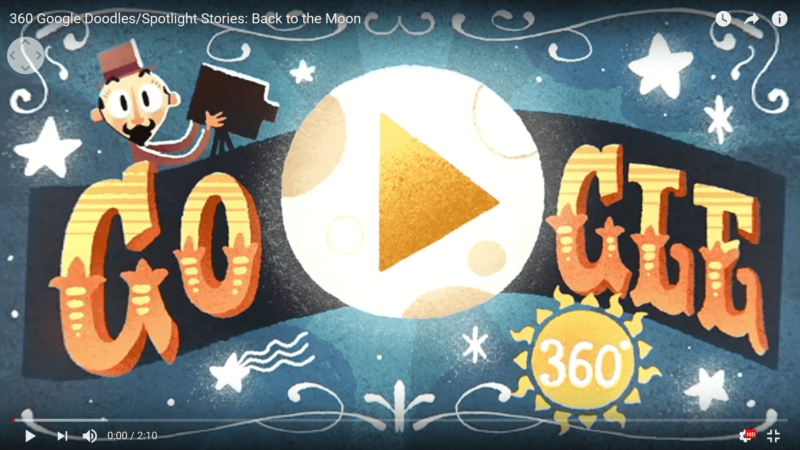Georges Méliès Google doodle pays tribute to visionary French film director with first-ever VR doodle
Today marks the 1912 release of Méliès's famous film, "À la conquête du pôle" ("The Conquest of the Pole").

Google is trying something entirely new with today’s doodle, producing its first ever virtual reality/360° interactive video to honor legendary film director Georges Méliès. The cutting-edge VR technology employed in the doodle reflects his groundbreaking special effects work in early cinematography.
In addition to being a film director, Méliès was a magician, illusionist, storyteller and visionary. Two of his films produced during the first decade of the 20th century — “Le Voyage dans la Lune” (“A Trip to the Moon”) in 1902 and “Le Tunnel sous la Manche ou le Cauchemar franco-anglais” (“Tunneling the English Channel”) in 1906 — would predict historical events that happened years after the films were released.
Today’s doodle is being shared on the 106th anniversary of Méliès’s “A la Conquête du Pôle” (“The Conquest of the Pole”), which was a magical retelling of the story of Norwegian explorer Roald Amundsen, who led the first expedition to the South Pole.
The video created by Google to honor Méliès, titled “Back to the Moon,” can be viewed from Google’s home pages around the world on desktop or mobile, as well on the Google Spotlight Stories YouTube channel. To get the full effect of the virtual reality film, the film has to be viewed on a VR headset or Google Cardboard.
To create the doodle, part of Google’s effort to spotlight stories, arts and culture, doodle teams partnered with the Cinémathèque Française to highlight Méliès’ extraordinary use of special effects during the early days of cinema. Google recruited Laurent Manonni, the director of heritage for The Cinémathèque Française, to share what made Méliès’s work so special:
Méliès’ contribution to the seventh art was revolutionary. In a time when cinematography was nascent and almost exclusively documentary-style, Méliès single handedly opened the doors of the dream, the magic, and the fiction. He accomplished this fundamental act by uniting the universes of Robert-Houdin with the chronophotography and cinematography of Marey and the Lumière brothers. The entire body of Méliès’ work shines with dynamic fantasy, boundless imagination, and an irresistible jubilation. The worlds he created were explosive and a unique mixture of phantasmagoria, devilry, trompe-l’oeil, illusions, flames, fumes, and vapors.
Hélène Leroux, the lead doodler on the George Méliès doodle, says her team wanted to call attention to some of the Méliès most well-known camera tricks, such as how he would film himself multiple times using the same film strip or stop filming and switch characters before starting to film again. He would also place a black screen in front of the camera to give the illusion that objects being filmed were disappearing.
Leroux says she also wanted the doodle to represent the handmade worlds Méliès created in his films: “It was an honor to have been a part of creating an original story and experience to remind people of how much Méliès brought to the world. We hope it will inspire others to bring their own dreams to life.”
Contributing authors are invited to create content for Search Engine Land and are chosen for their expertise and contribution to the search community. Our contributors work under the oversight of the editorial staff and contributions are checked for quality and relevance to our readers. The opinions they express are their own.
Related stories